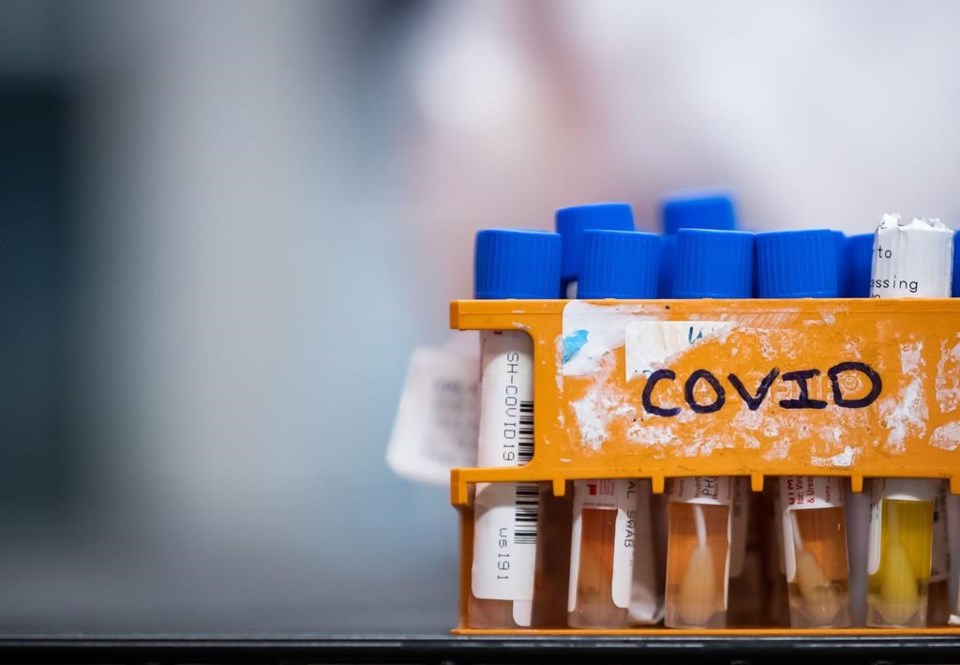A few weeks ago, there was an abrupt spike in COVID-19 cases in Eabametoong First Nation.
The virus spread rapidly through the remote community located about 300 kilometres north of Thunder Bay, Ont., triggering a lockdown that shut stores and public facilities while residents were advised to self-isolate to prevent further infections.
It all happened as the province was gradually lifting public health measures against COVID-19 and infection rates were declining in much of southern Ontario.
In Eabametoong, however, about 170 of the community's roughly 1,400 residents were ill with the virus in mid February, according to Chief Solomon Atlookan. Due to a limited number of homes and public facilities, it was a challenge for residents to isolate to curb the spread of COVID-19, he said.
"It was a massive infection rate here in the community and it sort of took everybody by surprise," Atlookan said in a phone interview.
"We are overcrowded in a lot of homes. And that's basically … what happened. People didn't know they're infected, and of course, they're out and about, and (cases) just went right up from there."
Eabametoong was not the only First Nation in northern Ontario to see a spike in COVID-19 infections in recent weeks.
Kasabonika Lake, Attawapiskat, Kashechewan and Mishkeegogamang First Nations all saw significant COVID-19 outbreaks that prompted responses from local pandemic management teams, government agencies, public health authorities and the military.
The Canadian Armed Forces deployed Canadian Rangers to help alleviate pressures on Eabametoong as well as those four other communities last month. A spokeswoman for the Department of National Defence said the Rangers helped distribute firewood and food as residents isolated and access to the communities was restricted.
In Eabametoong, Atlookan said another factor that contributed to the high number of recent infections was the lifting of numerous public health restrictions across the province.
"The rest of Ontario (has) now lifted their safeguards and the problem is our people go travel out into the cities, Thunder Bay or different communities, and they bring (COVID-19) back," he said. "So it becomes more difficult for us in the remote nations."
Eabametoong is still under a partial lockdown, the chief said, noting there's a plan to require residents to fill out a form when they travel outside of the community for contact tracing should any new cases arise.
Dr. Lloyd Douglas, a public health physician with the Sioux Lookout First Nations Health Authority – which serves Eabametoong and 32 other northern and remote First Nation communities – said the impact of COVID-19 in northern Ontario is "much different" from the south and the pandemic has brought longstanding issues in First Nation communities to the fore.
"We are talking about First Nation communities that are remote, First Nation communities that are under-resourced in many ways, including access to health services and access to health-care providers in the community," he said.
"Communities that are struggling with underlying housing crises, communities that are still having issues with clean water and poverty across the region."
The Sioux Lookout First Nations Health Authority redeployed staff and provided additional support around contact tracing, COVID-19 testing and case management in First Nation communities experiencing recent outbreaks, Douglas said.
As of Monday, there were 463 confirmed active COVID-19 cases in the First Nations that the Sioux Lookout First Nations Health Authority serves.
"That's a very high number. And if you look at ... the active COVID rates within our region at this time, it's about just over 2,000 per 100,000 people. That's pretty high, and we have seen an increase in hospitalizations," Douglas said. "And unfortunately, we've had a few deaths due to COVID-19 in recent weeks."
Wastewater data from Ontario's COVID-19 science advisory table indicates the province's north has a higher prevalence of the virus than any other region.
Douglas noted that chiefs in several First Nation communities in northern Ontario have decided to implement a regional lockdown, with several COVID-19 measures in place such as the requirement to get tested upon arrival in a community and ensuring gathering limits are "still pretty small."
"For the north, the pandemic is not over," he said.
He also noted that a number of communities in the north have lower COVID-19 vaccination rates compared to the rest of the province.
"We need to continue to work with our communities in order to increase the vaccine coverage rates," he said.
The Ministry of Indigenous Affairs said the province has supported the Sioux Lookout First Nations Health Authority and Weeneebayko Area Health Authority in holding COVID-19 vaccinations clinics to administer booster and pediatric doses in northern First Nation communities.
In Eabametoong, case counts have now decreased significantly – there were four active cases Monday – but Atlookan said it's too soon to celebrate.
"We were very diligent in trying to keep the Omicron away from the community, but somehow it was here and not detected fast enough," he said.
"We can't let our guard down."
This report by The Canadian Press was first published March 8, 2022.
———
This story was produced with the financial assistance of the Facebook and Canadian Press News Fellowship.
Noushin Ziafati, The Canadian Press
